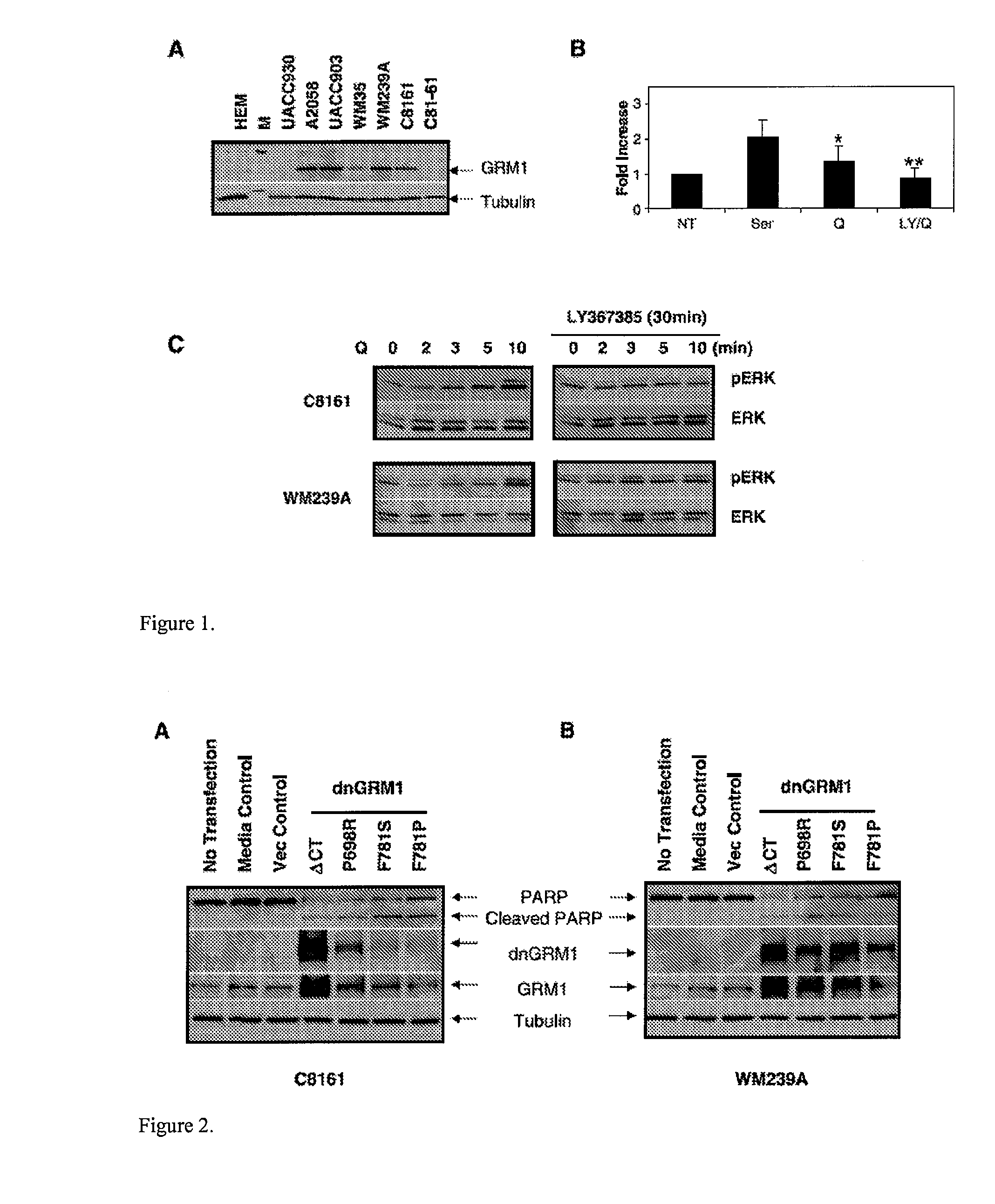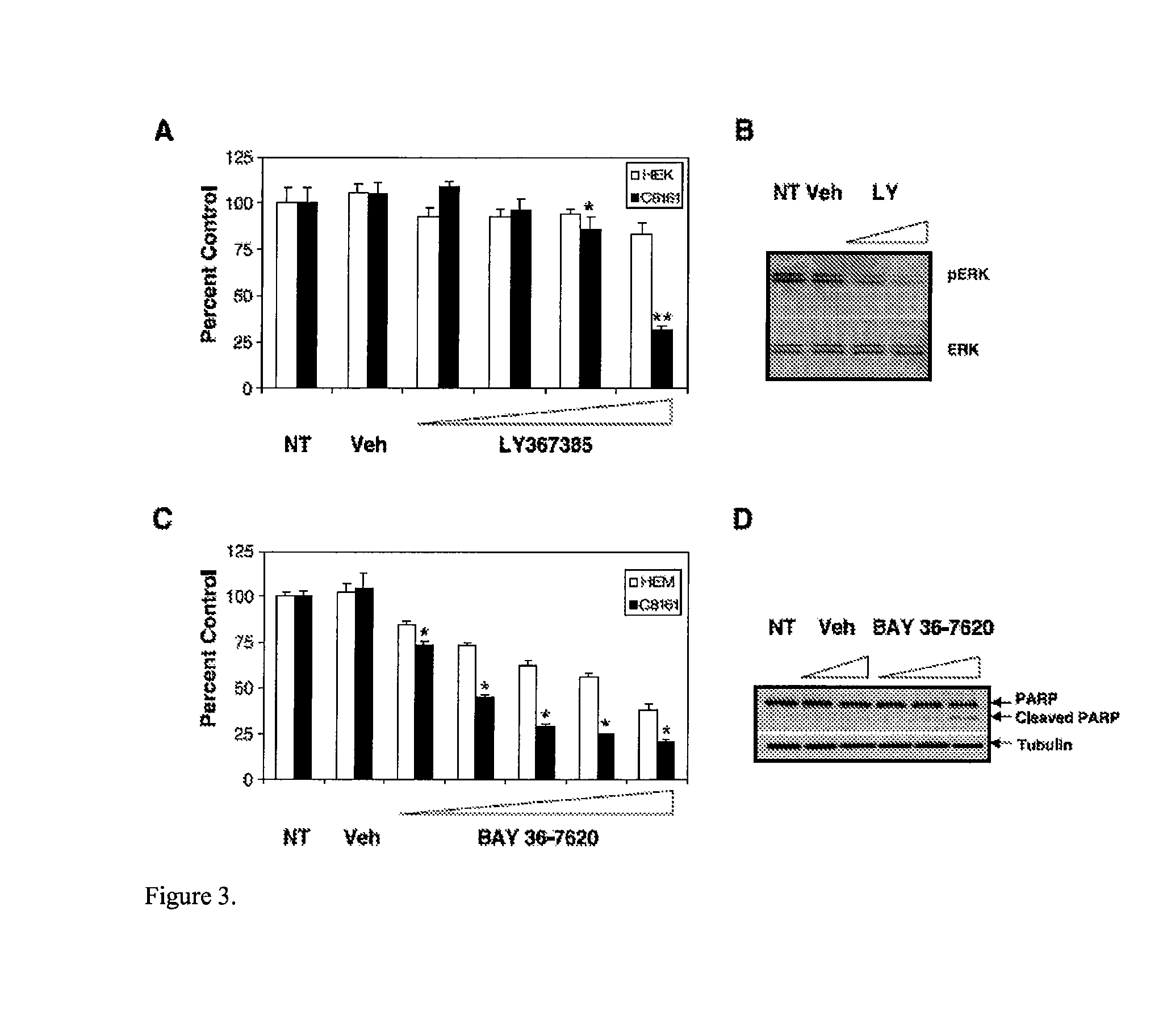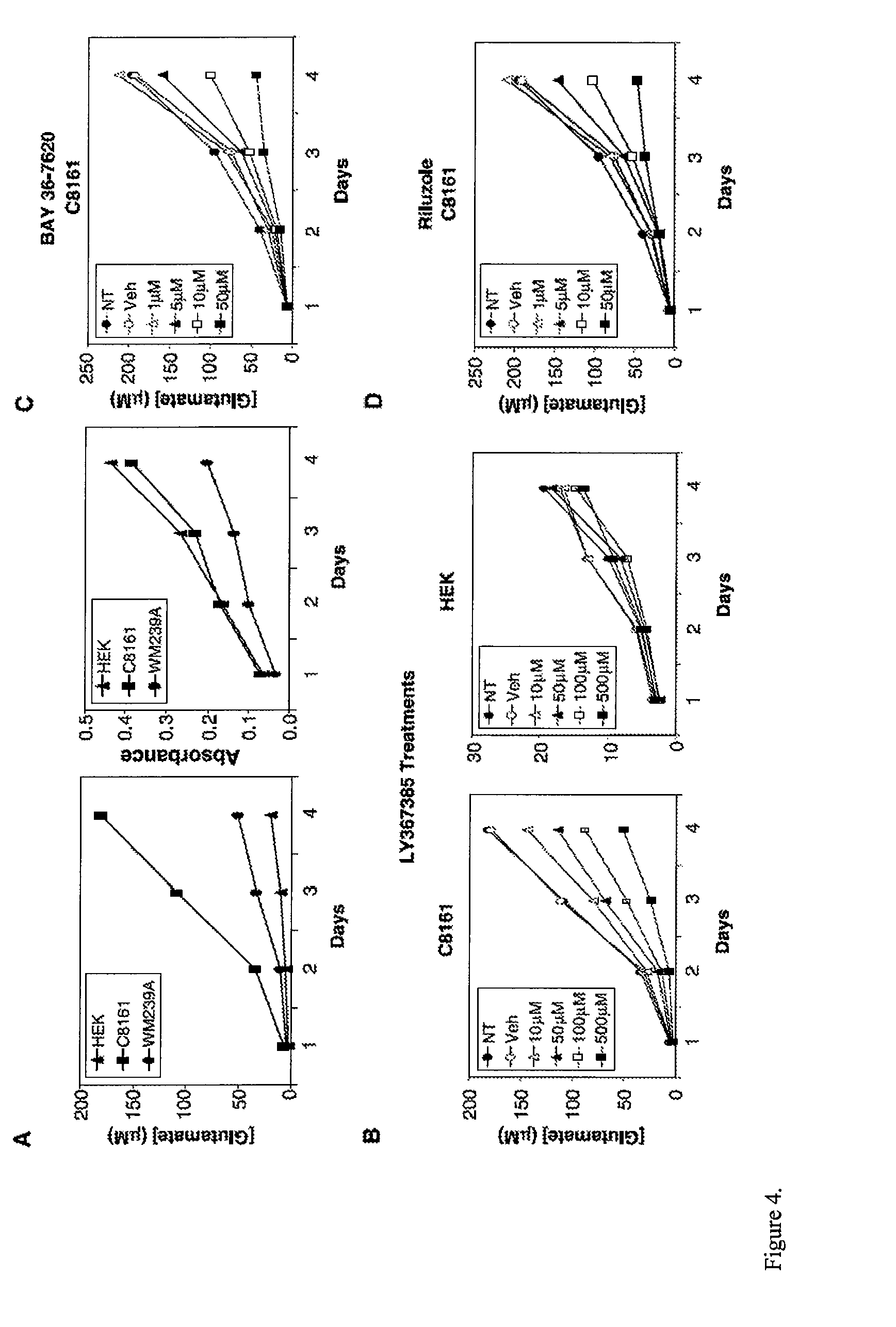Methods and compositions for treating cancer
a cancer and composition technology, applied in the field of methods, can solve the problems of raf and may not be an effective strategy, and achieve the effects of proliferation, and/or metastasis, and reducing tumor cell growth
- Summary
- Abstract
- Description
- Claims
- Application Information
AI Technical Summary
Benefits of technology
Problems solved by technology
Method used
Image
Examples
example 1
Functional GRM1 in Human Melanoma Cells
[0116]Previous analyses of several human melanoma cell lines and biopsies showed that approximately 40% of them were positive for GRM1 expression. An example of immunoblots of several human melanoma cell lines and normal primary HEMs is shown in FIG. 1A. HEM was used as a normal melanocyte control, and α-tubulin was used as a loading control. Expression of GRM1 was detected in some human melanoma cell lines but not in HEM.
[0117]MAPK is one of the key signaling pathways in human melanoma. Therefore, a study was conducted to determine if the MAPK pathway is also critical in GRM1-positive human melanoma cells. It is well known that the common BRAF-activating mutation (V600E) constitutively stimulates MAPK signaling. Therefore, genotypes of BRAF and N-Ras were assessed by DNA sequencing in GRM1-positive human melanoma cell lines. C8161 did not have the most common mutations at either BRAF (codon 600) or N-Ras (codons 12, 13, and 61). However, WM239...
example 2
[0121]Induction of Apoptosis by dnGRM1
[0122]To further investigate GRM1 functionality and activity in human melanoma cells, two different but complimentary means were used to suppress GRM1 function. First, dnGRM1 was studied. These mutants have a small deletion (DCT 694-695, DCT) or single base substitutions (P698R, F781S, and F781P) in the intracellular loop 2 or 3, which had been shown to be critical in GRM1 signaling. Human melanoma cell lines C8161 (FIG. 2A) and WM239A (FIG. 2B) were transfected with vector control or four different dnGRM1 mutants. At 24 hours after transfection, protein lysates were collected for Western immunoblots. PARP cleavage is a well-known apoptotic marker by the appearance of the cleaved form at 89 kDa. PARP cleavage was detected only in dnGRM1-transfected samples but not in vector control (FIG. 2, top). Second panels show the levels of exogenously transfected GRM1 to verify the presence of dnGRM1 in these cells. dnGRM1 clones were made from a wild-type...
example 3
Inhibition of Human Melanoma Cell Proliferation by GRM1 Antagonists
[0123]As a second approach, GRM1 antagonists were used to examine GRM1 functionality and activity in human melanoma cells. LY367385, a competitive antagonist, binds to the same site as the natural ligand glutamate. BAY36-7620, one of the noncompetitive antagonists, binds to the transmembrane domain of the receptor resulting in stabilization of inactive conformation. MTT cell proliferation assays were used to assess growth response of human melanoma cells in the presence of competitive or noncompetitive antagonist.
[0124]Human melanoma cells were grown in the presence of different concentrations of LY367385 in RPMI 1640 devoid of glutamate and glutamine supplemented with GlutaMax because LY367385 competes with the natural ligand glutamate for the binding to GRM1 receptor (FIG. 3A). Cells were treated with LY367385 at concentrations of 10, 50, 100, and 500 μmol / L, respectively. No treatment (NT) and 500 μmol / L NaOH (Veh...
PUM
| Property | Measurement | Unit |
|---|---|---|
| volumes | aaaaa | aaaaa |
| volume | aaaaa | aaaaa |
| volume | aaaaa | aaaaa |
Abstract
Description
Claims
Application Information
 Login to View More
Login to View More - R&D
- Intellectual Property
- Life Sciences
- Materials
- Tech Scout
- Unparalleled Data Quality
- Higher Quality Content
- 60% Fewer Hallucinations
Browse by: Latest US Patents, China's latest patents, Technical Efficacy Thesaurus, Application Domain, Technology Topic, Popular Technical Reports.
© 2025 PatSnap. All rights reserved.Legal|Privacy policy|Modern Slavery Act Transparency Statement|Sitemap|About US| Contact US: help@patsnap.com



